15.09 Plant Hormones
Overview of Plant Hormones
- Definition: Plant hormones, or plant growth regulators, are chemical messengers coordinating plant growth and responses.
- Differences from Animal Hormones:
- Not produced in specialized glands but in various plant tissues.
- Can move cell-to-cell by diffusion or active transport or via phloem/xylem sap.
- Often act locally, influencing nearby cells.

Major Plant Hormones
1.Auxins (e.g., IAA – Indole-3-acetic acid)
- Synthesis Location: Produced in shoot and root tips (meristems).
- Transport: Primarily by active transport from cell to cell; also in phloem sap.
- Functions:
- Cell Elongation: Promotes growth by stimulating cells to pump protons into cell walls, acidifying them and loosening cellulose microfibril connections, allowing cell expansion.
- Mechanism:
- Auxin Binding: Binds to receptors on the cell membrane, activating ATPase proton pumps.
- Acidification: Protons lower pH in cell walls, activating expansin proteins.
- Cell Wall Loosening: Expansins disrupt bonds between cellulose and other cell wall components, allowing water intake and cell elongation.
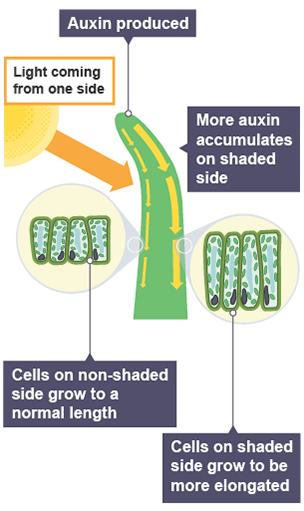

2.Gibberellins
- Synthesis: Present in high concentrations in young leaves, seeds, and stems.
- Functions:
- Stem Elongation: Stimulates cell elongation by activating XET enzymes in cell walls, which break bonds in hemicellulose, allowing cellulose microfibrils to separate.
- Seed Germination:
- Gibberellins in seeds trigger germination by stimulating amylase production in the aleurone layer, which breaks down starch in the endosperm into glucose, providing energy for embryo growth.
- Gene Regulation: Gibberellins promote the breakdown of DELLA proteins, which otherwise inhibit transcription factors for amylase synthesis.
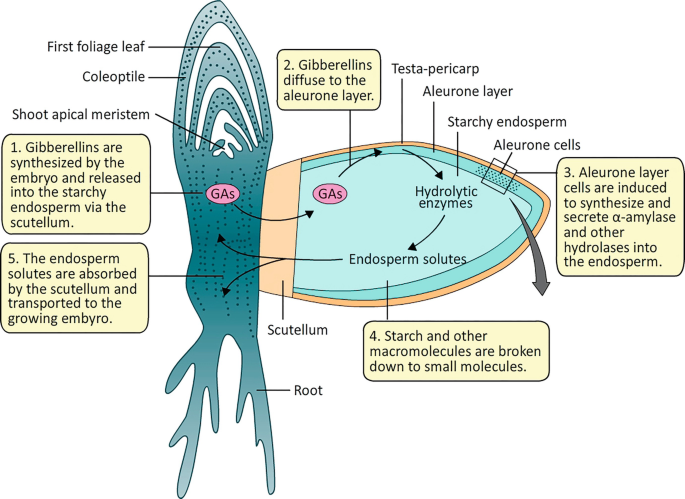
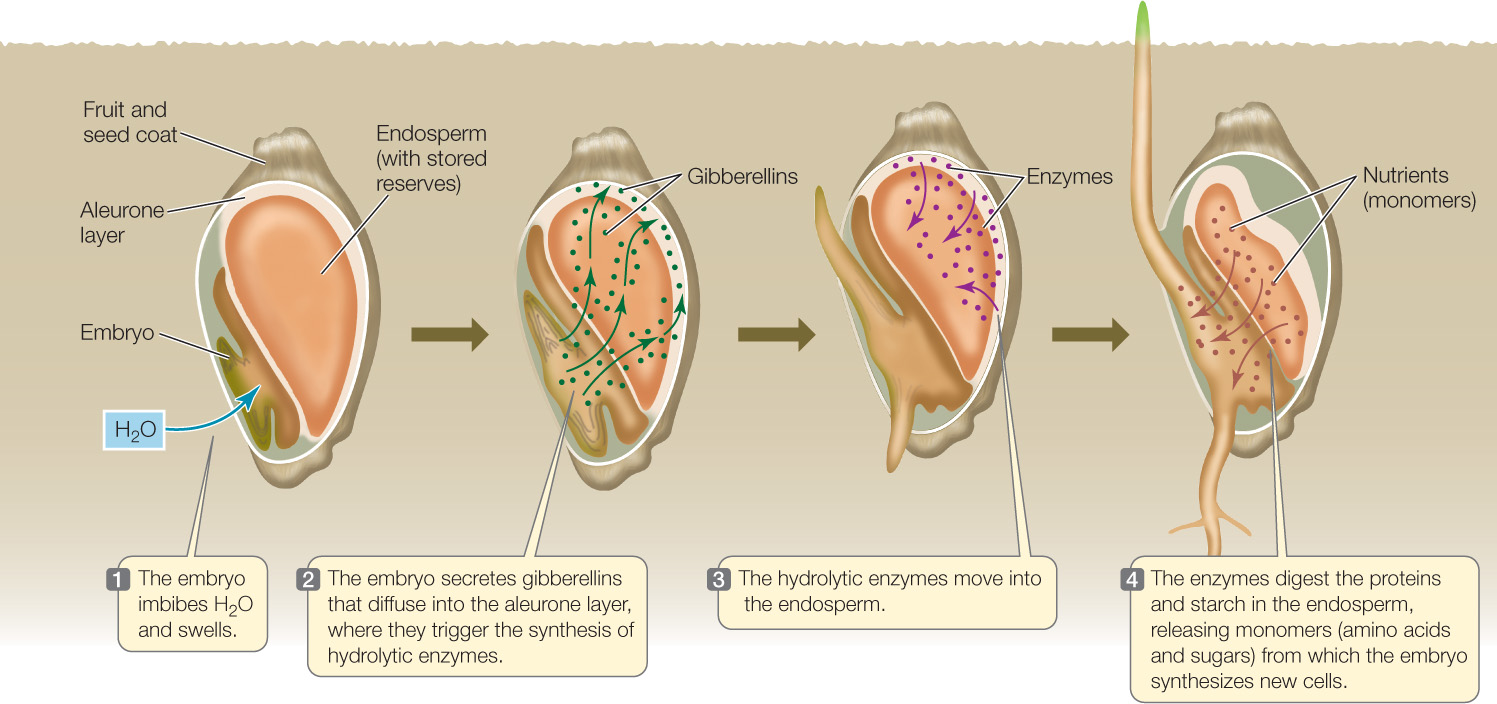
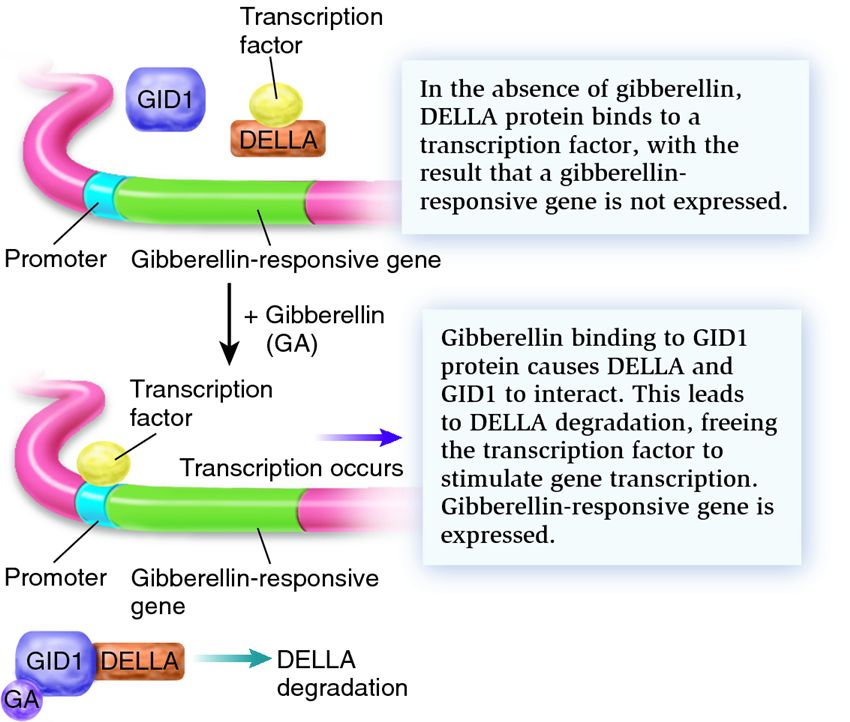

3.Abscisic Acid (ABA)
- Function: Controls plant responses to stress, such as drought, by closing stomata to conserve water.
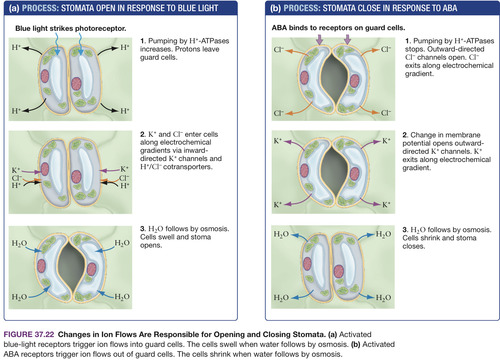
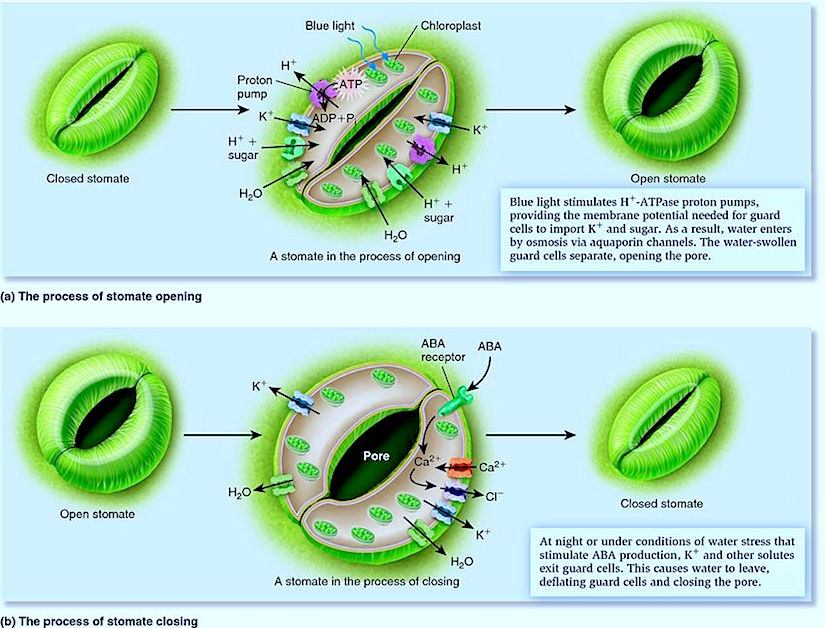
Mechanism of Auxin-Induced Elongation
- Auxin Binding: Auxin binds to receptors on the cell membrane.
- Proton Pump Activation: Stimulates ATPase proton pumps to move H⁺ ions from cytoplasm into cell walls.
- Acidification and Expansin Activation: Lower pH in cell walls activates expansins, which loosen the matrix surrounding cellulose microfibrils.
- Water Absorption and Elongation: Loosened cell walls allow cells to absorb water, increasing internal pressure and causing elongation.
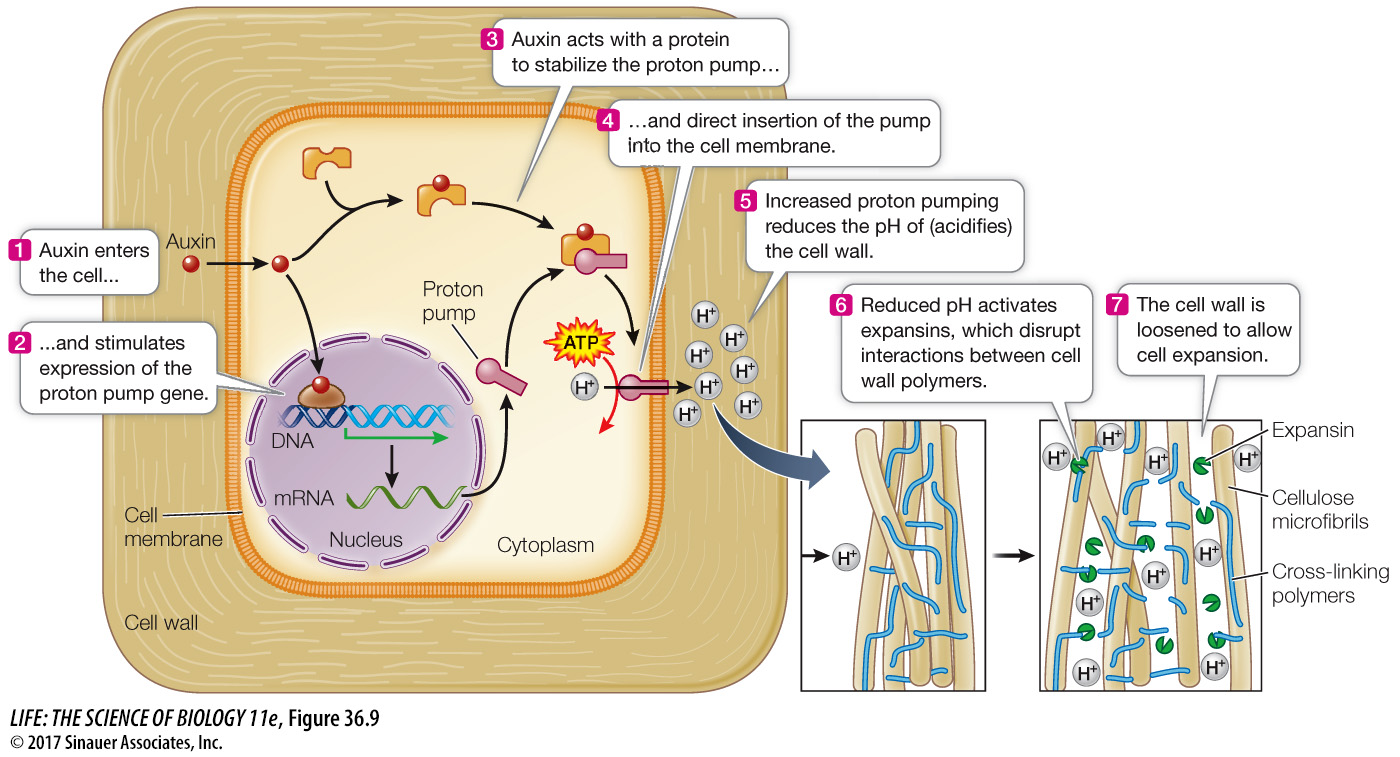
Mechanism of Gibberellin-Induced Seed Germination
- Water Uptake: Triggers gibberellin synthesis in the embryo.
- Gibberellin Release: Diffuses to the aleurone layer, stimulating amylase production.
- Starch Breakdown: Amylase converts endosperm starch to maltose, which is then hydrolyzed to glucose.
- Energy for Growth: Glucose fuels cellular respiration in the embryo, supporting growth.
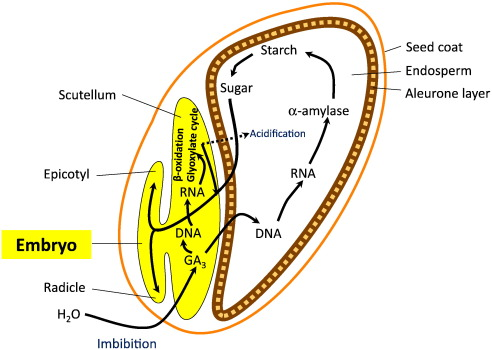
Plant Hormone Transport and Signal Amplification
- Receptors: Located on the cell surface, cytoplasm, or nucleus; initiate a cascade of signals to amplify and transmit the hormone’s effects.
- Signal Pathways: Often involve ionic or chemical cascades within the cell, similar to signaling pathways in animals.
Key Concepts and Structures
- Expansins: Proteins in cell walls activated by low pH to loosen cellulose microfibril connections, aiding cell elongation.
- Endosperm: Nutrient-rich tissue in seeds, providing starch as an energy source during germination.
- Aleurone Layer: Protein-rich layer surrounding the endosperm; synthesizes amylase in response to gibberellins during germination.
Key Terms
- DELLA Proteins: Inhibitors in gibberellin signaling; their degradation promotes transcription of growth-related genes.
- Auxin: Plant hormone promoting cell elongation.
- Gibberellin: Hormone promoting stem elongation and seed germination.
- Abscisic Acid (ABA): Hormone involved in stress responses, such as stomatal closure during drought.
- Expansins: Proteins that loosen cell walls to allow cell elongation.
- XET Enzyme: Enzyme that breaks bonds in hemicellulose, aiding cell wall flexibility for elongation.
Practise Questions
Test 1
1. How do plant hormones differ from animal hormones in terms of their production?
2. Which plant hormone is primarily responsible for promoting cell elongation?
3. Where are gibberellins synthesized in plants?
4. How does abscisic acid (ABA) help plants respond to drought conditions?
5. What role do expansins play in plant cell elongation?
6. During seed germination, how do gibberellins facilitate the process?
7. What is the function of DELLA proteins in gibberellin signaling pathways?
8. How are plant hormones typically transported within the plant?
9. What initiates the activation of expansin proteins during auxin-induced cell elongation?
10. What enzyme is activated by gibberellins to facilitate stem elongation?
Correct Answers: 0%
Test 2
1. How do plant hormones typically move within the plant?
2. What initiates the activation of expansin proteins during auxin-induced cell elongation?
3. In the mechanism of auxin-induced cell elongation, what is the role of ATPase proton pumps?
4. Which enzyme is activated by gibberellins to facilitate stem elongation?
5. During seed germination, how do gibberellins facilitate the process?
6. What role do DELLA proteins play in gibberellin signaling pathways?
7. What is the function of the aleurone layer during seed germination?
8. How do plant hormone receptors initiate signal amplification within the cell?
9. What is the role of the endosperm in seeds during germination?
10. How do gibberellins promote the breakdown of DELLA proteins?
Correct Answers: 0%